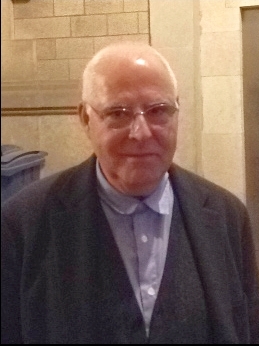Related Research Articles

Antoni Tàpies i Puig, 1st Marquess of Tàpies was a Catalan painter, sculptor, and art theorist.

The Museu Nacional d'Art de Catalunya, abbreviated as MNAC, is a museum of Catalan visual art located in Barcelona, Catalonia, Spain. Situated on Montjuïc hill at the end of Avinguda de la Reina Maria Cristina, near Pl Espanya, the museum is especially notable for its outstanding collection of romanesque church paintings, and for Catalan art and design from the late 19th and early 20th centuries, including modernisme and noucentisme. The museum is housed in the Palau Nacional, a huge, Italian-style building dating to 1929. The Palau Nacional, which has housed the Museu d'Art de Catalunya since 1934, was declared a national museum in 1990 under the Museums Law passed by the Catalan Government. That same year, a thorough renovation process was launched to refurbish the site, based on plans drawn up by the architects Gae Aulenti and Enric Steegmann, who were later joined in the undertaking by Josep Benedito. The Oval Hall was reopened for the 1992 Summer Olympic Games, and the various collections were installed and opened over the period from 1995 to 2004. The museum was officially inaugurated on 16 December 2004. It is one of the largest museums in Spain.
Dau al Set, the first post-World War II artistic movement in Catalonia, was founded in Barcelona in September 1948 by poet Joan Brossa. The movement, best known for translating the conscious and unconscious mind into art, was heavily influenced by both the Surrealist and Dadaist movements. In Catalan Dau al Set means "the seventh face of the dice", which expresses the movement's rupturist character.

Joan Brossa was a Catalan poet, playwright, graphic designer and visual artist. He wrote only in the Catalan language.

Santa Maria de Montserrat is an abbey of the Order of Saint Benedict located on the mountain of Montserrat in Monistrol de Montserrat, Catalonia, Spain. It is notable for enshrining the image of the Virgin of Montserrat. The monastery was founded in 1025 and rebuilt between the 19th and 20th centuries. With a community of around 70 monks, the abbey is still in use to this day.

Dionís Renart i García was a Catalan sculptor and astronomer.

Eduard Arranz Bravo was a Catalan Spanish painter.

Joan-Josep Tharrats i Vidal was a Catalan painter, art theorist and publisher.

Alfons Borrell i Palazón was a Spanish abstract painter.

José Cusachs y Cusachs was a Spanish soldier and painter.

Lluís Graner i Arrufí, or Arrufat in Spanish was a Spanish painter in the Realistic style, artistic director and theater entrepreneur. After achieving notable success in painting, he moved into lighting design for theatrical shows and developed the Catalan lyrical theater genre of "musical visions".

Pablo Gabino Rey Sendón is a Spanish painter artist born in Barcelona in 1968.

Maria Lluïsa Borràs i González, doctorate in Art History from the Universitat de Barcelona, was a Spanish writer, critic, exhibition curator and specialist in the avant-garde and Dadaism.
Ricardo Urgell Carreras was a Spanish painter. He was the son of modernist landscape painter Modest Urgell.

Takeshi Motomiya is a multidisciplinary Japanese artist living in Barcelona since 1986. Throughout his career, he has worked within various visual arts disciplines that include painting, engraving, and sculpture. Characterized by his work of textures and natural pigment colors, his work is mainly based on abstract art and shows some attributes of figurativism and abstract expressionism, infused with ancient Japanese gods, biblical content, and Greek and Egyptian mythology.

Antoni Llena is a Spanish artist.

Josep Grau-Garriga was a Catalan textile artist who cultivated various techniques: painting, drawing, engraving, wall painting, sculpture and above all tapestry. He was the director of the Escola Catalana del Tapís and exhibited his works around the world. He was born in Sant Cugat del Vallès and died in Angers, Pays del Loire.
References
- ↑ Tapies, Antoni (2019-03-09). "ABC Jaume Muxart" (in Spanish) – via PressReader.
- ↑ Montanes, Jose Angel (March 8, 2019). "Fallece Jaume Muxart, el último del Grup Taüll". El Pais. Retrieved March 9, 2019.
- ↑ "Muere el pintor Jaume Muxart a los 96 años". El Periodico. March 8, 2019. Retrieved March 9, 2019.